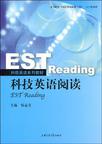科技英语阅读
出版时间:2009-9 出版社:上海交通大学出版社 作者:韩孟奇 编 页数:222
前言
随着我国对外科技交流的发展,科技英语已成为我国科技工作者查询科技资料、撰写学术论文、进行对外学术交流的工具。因此,对大学生尤其对理工科和英语专业的大学生而言,掌握科技英语使用技能的必要性和重要性正与日俱增。阅读技能是所有技能的基础,要想进一步提高科技英语水平,首先应突破阅读关。 本书的使用对象是已具备大学英语四级水平,希望继续提高英语水平的理工科大学生和英语专业二、三年级学生及广大英语和科技爱好者。本书特点如下: 1.新颖性。所有文章均选自近期出版的英语科技报刊、科普读物或国际上著名的科技网站,反映了目前先进的科研成果。 2.趣味性。充分考虑使用者心理规律,以兴趣为先导,以培养能力为目标,力戒以往教材因过于强调知识而挫伤读者积极性的做法。 3.知识性。选材重视文章的知识含量,避免过分浅显,力求帮助读者提高科学素养。 本书的选材以科普文章为主,取材广泛,内容涉及生命科学、计算机科学、工程学、生物学、医学、环境科学、新能源、太空科学等15个科技领域,反映了当代科技的前沿成果,并贴近现实,富有时代气息。 本书语言富有科技英语特色,含有较丰富的通用和专业科技英语词汇和语法结构。在内容编排上,根据课文A的难度系数,由易到难,循序渐进。本书结合文章内容,设计了形式多样的练习,以帮助读者充分理解、掌握和运用所学知识。本书还配有同步辅导书《科技英语阅读导读》,《导读》主要包括背景简介、难点解析、练习答案、参考译文等内容,以满足教师和学习者的需求。
内容概要
本书共15个单元,每个单元包括两篇课文,即课文A和课文B,内容涉及生命科学、计算机科学、工程学、生物学、医学、环境科学、新能源、太空科学等15个科技领域。《科技英语阅读》兼具新颖性、趣味性和知识性,使用对象为具备大学英语四级水平的理工科大学生和英语专业二、三年级学生及广大英语和科技爱好者。
书籍目录
Unit I Life Science Text A Human Cloning Text B Are We 10 Years Away from Artificial Life?Unit 2 Biological Engineering Text A How Stem Cells Work? Text B Taking Your Genes in HandUnit 3 New Energy Text A Ethanol, Schmethanol Text B The Coming WaveUnit 4 Transportation Text A Intelligent Highways Text B Making WavesUnit 5 New Facilities Text A Facial Recognition Systems Text B GPS——the Most Precise Navigation System Ever InventedUnit 6 Telecommunication Text A Video Conferencing Cell Phones Text B You Are Your Cell PhoneUnit 7 Space Text A Starship Enterprise: the Next Generation Text B Phoenix to Go Digging on Red PlanetUnit 8 Health and Medicine Text A Telemedicine Comes Home Text B Would a "Fat Tax" Save Lives?Unit 9 Internet Text A The Internet Is Sick... But We Can Make It Better Text B Watching While You SurfUnit 10 VR Technology Text A The Military Applications of Virtual Reality Text B Reality, Only BetterUnit 11 Robots Text A Rise of the Rat-brained Robots Text B Nothing to Lose But Their ChainsUnit 12 Environment Text A Future Crops. the Other Greenhouse Effect Text B The Methane MysteryUnit 13 Animals Text A Jellyfish Invasion Text B Who Belongs in the Zoo?Unit 14 Computer Science Text A Software That Makes Software Better Text B From Blueprint to DatabaseUnit 15 Automobile Text A How Hydrogen-Boosted Gasoline Engine Works? Text B The Car Doctor Is InGlossaryAcknowledgements
章节摘录
1 Sometimes you do things simply because you know how to do. People have known how tomake ethanol since the dawn of civilisation, if not before. Take some sugary liquid. Addyeast. Wait. They have also known for a thousand years how to get that ethanol out of theformerly sugary liquid and into a more or less pure form. You heat it up, catch the vapour thatemanates, and cool that vapour down until it liquefies. 2 The result burns. And when Henry Ford was experimenting with car engines a centuryago, he tried ethanol out as a fuel. But he rejected it——and for good reason. The amount ofheat you get from burning a litre of ethanol is a third less than that from a litre of petrol. Whatis more, it absorbs water from the atmosphere. Unless it is mixed with some other fuel, suchas petrol, the result is corrosion that can wreck an engine's seals in a couple of years. So whyis ethanol suddenly back in fashion? That is the question many biotechnologists in Americahave recently asked themselves. 3 The obvious answer is that, being derived from plants, ethanol is "green". The carbondioxide produced by burning it was recently in the atmosphere. Putting that C02 back into theair can theerefore have no adverse effect on the climate. But although that is true, the realreason ethanol has become the preferred green substitute for petrol is that people know how tomake it——that, and the subsidies now available to America's maize farmers to produce thenecessary feedstock. Yet such things do not stop ethanol from being a lousy fuel. To solvethat, the biotechnologists argue, you need to make a better fuel that is equally green. This iswhat they are trying to do!
图书封面
评论、评分、阅读与下载
用户评论 (总计5条)
- 有一定的难度,对于高年级且英语较好的学生适合。
- 本书集新颖性、趣味性及知识性为一体,是在校生拓宽知识而的一本好书。
- 很好,快递很给力,质量也非常好,准时送达,超好评!!
- 不给力不给力不给力不给力!!!
- 非常不给力,不好不好不好
